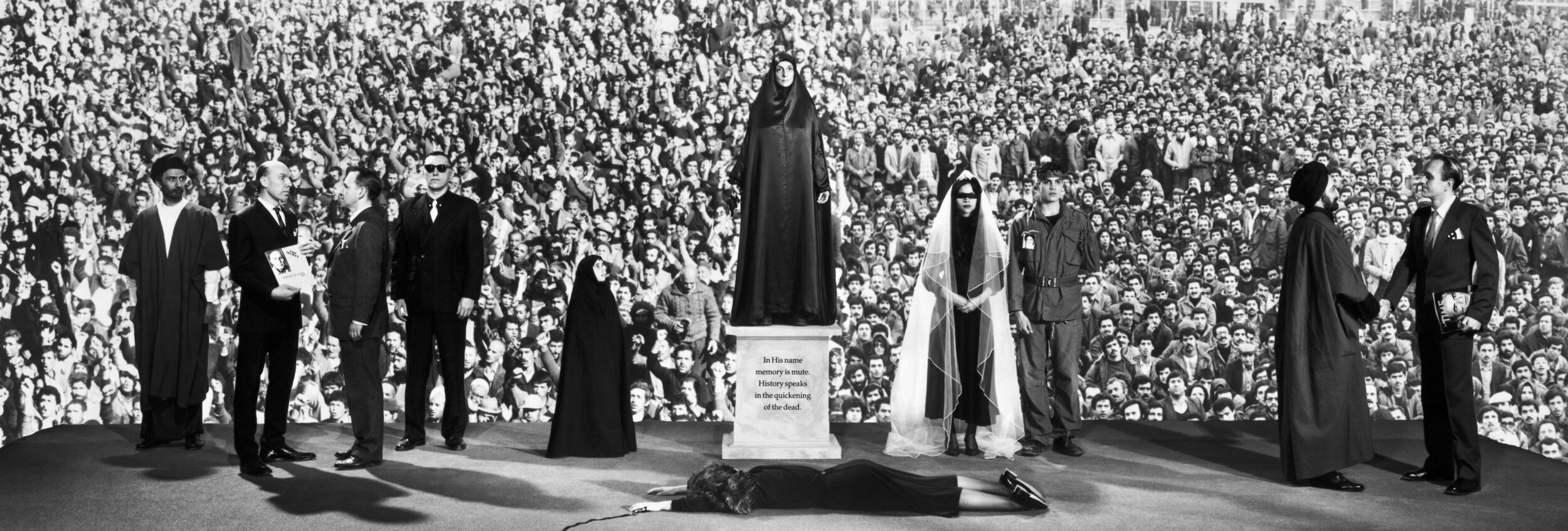Iranian Photographers: Directing the Gaze
©Mitra Tabrizian ’Tehran 2006’
Amidst tensions surrounding President Trump’s unjust assasination of General Qassam Soleimani and the mysterious Boeing aircraft crash, conservatives and liberals alike fear an escalation of the already volatile Middle East relations. It is, however, wrong to assume that this single action would spark a “new” war when millions of people in the Middle East and elsewhere are living in the realities of violence related to US, Israeli, Russian, and Chinese interventions. Most frightening of all was the President’s failure to get approval by Congress for his action, causing the House to vote for a largely symbolic measure requiring Mr. Trump to receive authorization before any further military action regarding Iran. Secretary of State Mike Pompeo said in his statement, “The world is a much safer place today.” The Pentagon reasoned that General Soleimani was actively planning to attack American diplomats and service members in Iraq and throughout the region, but failed to provide evidence of such plans. This decision was irresponsible, cruel, fueled by ego, and put countless lives at risk.
©Mitra Tabrizian Surveillance 1988-89
The unfortunate norm is that Western media has proceeded to make blanket statements about an entire nation and its people. Iran is home to a diverse array of political, artistic, and spiritual opinions. Art is a powerful tool to counter such injustices and shed light on the nuances of a situation as well as the cultural richness of a population that has contributed hugely to international culture. We at Musée have found this to be an ideal moment to gather a meager selection of our favorite photographers with a relationship to Iran which highlight the complexity of the current event, the modernity of Iranians, and the resilience photography can offer.
©Mitra Tabrizian Film Stills 2018
©Mitra Tabrizian Film Stills 2018
Mitra Tabrizian, born in Tehran, Iran lives and works in London, UK and has been producing radical photography since the 80’s. We’ve included some of her early work, Surveillance (1988-89) and Tehran (2006) as well as her latest project Film Stills (2018). Tabrizian has always possessed a unique ability to depict global capitalism and corporate post-modernity in an intriguing, unflinchingly honest way. Her earlier work incorporated elements of staging and surrealism whereas photos from Film Stills embody realism. Film Stills is a project related to the artist’s 2017 film, Gholam and both aim to portray London’s ‘unseen’ city of migrants, “living on the edge,” as she describes. The film features an Iranian taxi driver with no past, no future, and no convictions. The photos are an unconventional play on Hollywood commercial culture, pared down, lacking drama and leaving the story up to interpretation. Even, as Tabrizian hopes, perhaps telling an anti-story.
©Ali Rajabi Collide 2019
©AliRajabi Collide 2019 https://www.arajabi.com
Ali Rajabi is a New York based photographer and Hasselblad Master. His work has been exhibited internationally and published in a broad range of photography journals. His most recent series, Collide features a woman, back turned to the camera, wearing a Chador (or long black scarf) in Western settings that challenge the typical concept of the Chador. The photos engage questions of choice and perspective. The viewer’s interpretation relies on their point of view, culturally and politically. Collide is a fresh take on feminism, sexuality, and societal norms.
©Aydin Matlabi Sacred Defence
©Aydin Matlabi Sacred Defence
Aydin Matlabi is a Canadian-Iranian photographer and activist. His general involvement and photos of the 2009 post-election protests in Iran cost him his expatriation from the county. Matlabi felt discouraged in the power of the media and naive for thinking he could make a change therefore he chose not to sell his valuable pictures to media outlets. In an interview with writer and photographer Adrian Knowler Matlabi said, “People just change the page and move on. Journalism captures the moment for that moment, but in the fine arts you can create a narrative that transcends time. The media doesn’t like a failed revolution, it doesn’t fit their narrative.” Matlabi’s distinction between fine art and photojournalism is an interesting one. That’s why we’ve included photos from both the protest series and another titled, Sacred Defense, shot in a studio. Sacred Defense is the commemorative title given to Iranian soldiers who died during armed conflict. Matlabi interrogated the notion of martyrdom in the context of his diasporic perspective. Fine art photography and photojournalism do work in separate ways but the power of the image remains steadfast. Currently, Matlabi has reckoned with the aforementioned concerns by executing his photojournalistic shoots as long-term collaborative events, living with his subjects for extended periods and keeping in contact to track the effects of his work. He’s also founded Foundation 64 which brings cameras and equipment to orphans in conflict areas, enabling them to establish their own narrative.
©Aydin Matlabi Like Water I Came Like Wind I Go 2009
©Aydin Matlabi Like Water I Came Like Wind I Go 2009
Politics do not occur in a vacuum. They have real life stakes and impacts. Maybe we don’t have a say in what our leaders do but we do have the power to organize around their choices and develop art and culture that reflects how those choices influence our lives. At times, those responses have fed back into the system, inciting positive change and justice. What does it look like to be alive right now, between feuding nations and frightening abuses of power? It can sometimes look beautiful like Matlabi’s diasporic Iranians modeling as deceased soldiers, draped in red fabric or odd like characters wandering the deserted plains of Tabrizian’s panorama, propaganda and telephone wires looming over their heads or shocking like a religiously dressed Iranian standing in front of a Victoria’s Secret. Either way, we as artists, and humans hold the camera in our hands. As long as that stays true, we’re alright.
©Ali Rajabi Collide 2019

















